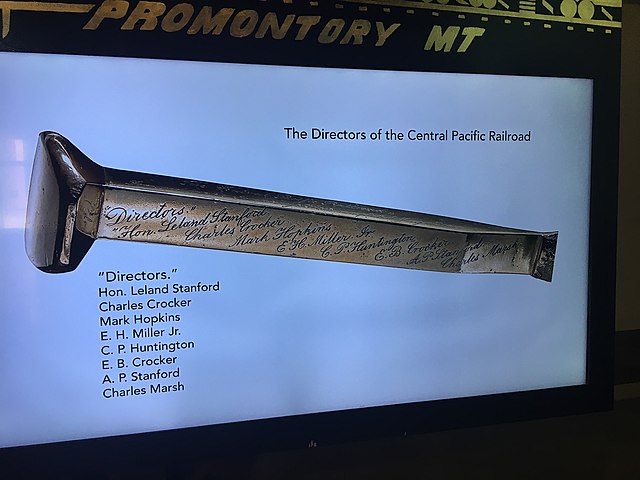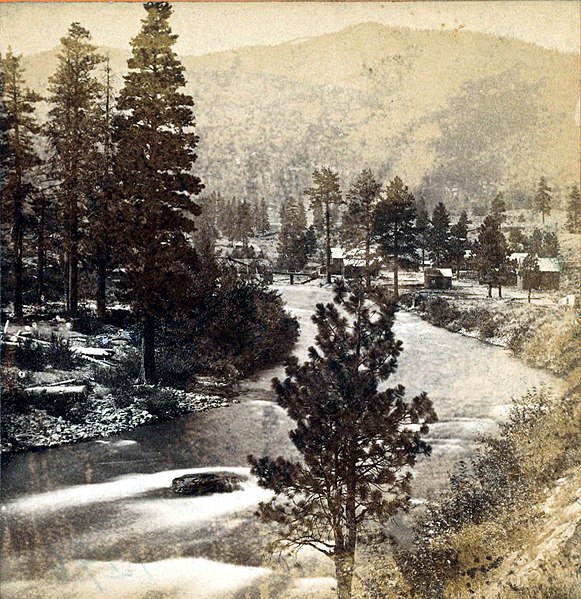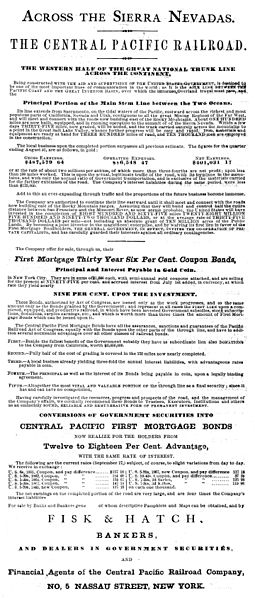The Central Pacific Railroad (CPRR) was a rail company chartered by U.S. Congress in 1862 to build a railroad eastwards from Sacramento, California, to complete most of the western part of the "First transcontinental railroad" in North America. Incorporated in 1861, CPRR ceased independent operations in 1875 when the railroad was leased to the Southern Pacific Railroad. Its assets were formally merged into Southern Pacific in 1959.
Gold Spike at the California State Railroad Museum, Sacramento, California. The museum also has a wall-sized painting of the Gold Spike ceremony which includes images of Charles Marsh and Leland Stanford (who were the only two Central Pacific directors to attend the Gold Spike ceremony at Promontory Summit, Utah).
The Truckee River at Verdi, Nevada, c. 1868–75. When the Central Pacific Railroad reached its site in 1868, Charles Crocker pulled a slip of paper from a hat and read the name of Giuseppe Verdi; so, the town was named after the Italian opera composer.
Advertisement for CPRR First Mortgage Bonds (1867)
CPRR #113 Falcon, a Danforth 4-4-0, at Argenta, Nevada, March 1, 1869 (photo: J.B. Silvis)
The Pacific Railroad Acts of 1862 were a series of acts of Congress that promoted the construction of a "transcontinental railroad" in the United States through authorizing the issuance of government bonds and the grants of land to railroad companies. In 1853, the War Department under then Secretary of War Jefferson Davis was authorized by the Congress to conduct surveys of five different potential transcontinental routes from the Mississippi ranging from north to south. It submitted a massive twelve volume report to Congress with the results in early 1855. However, no route or bill could be agreed upon and passed authorizing the Government's financial support and land grants until the secession of the southern states in 1861 removed their opposition to a central route. The Pacific Railroad Act of 1862 was the original act. Some of its provisions were subsequently modified, expanded, or repealed by four additional amending Acts: The Pacific Railroad Act of 1863, Pacific Railroad Act of 1864, Pacific Railroad Act of 1865, and Pacific Railroad Act of 1866.

First and last pages of the original manuscript of the Pacific Railroad Act of 1862 (12 Stat. 489) signed by President Lincoln on July 1, 1862 (U.S. National Archives)





